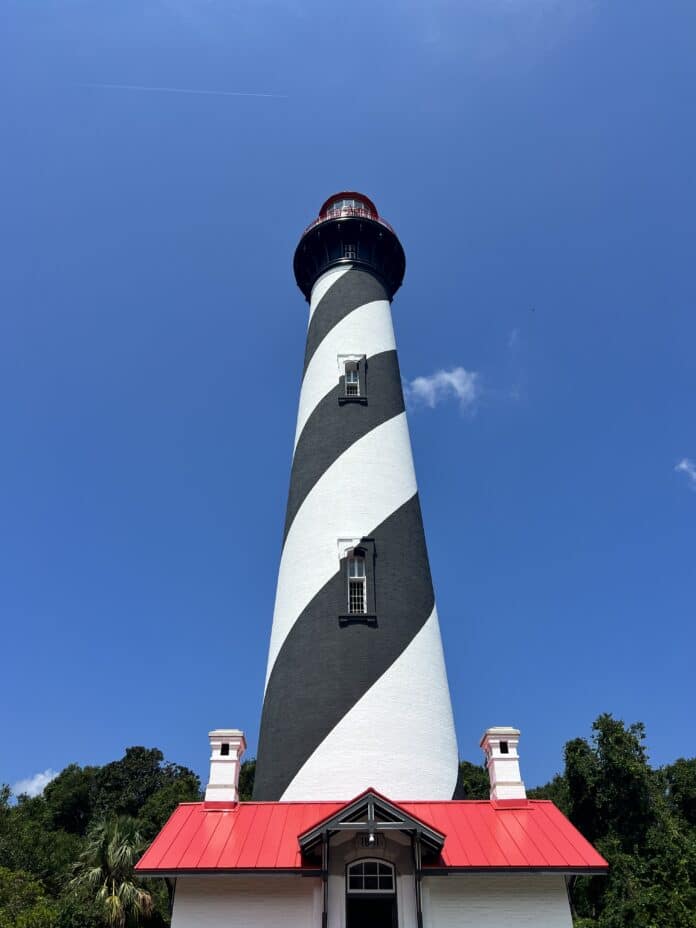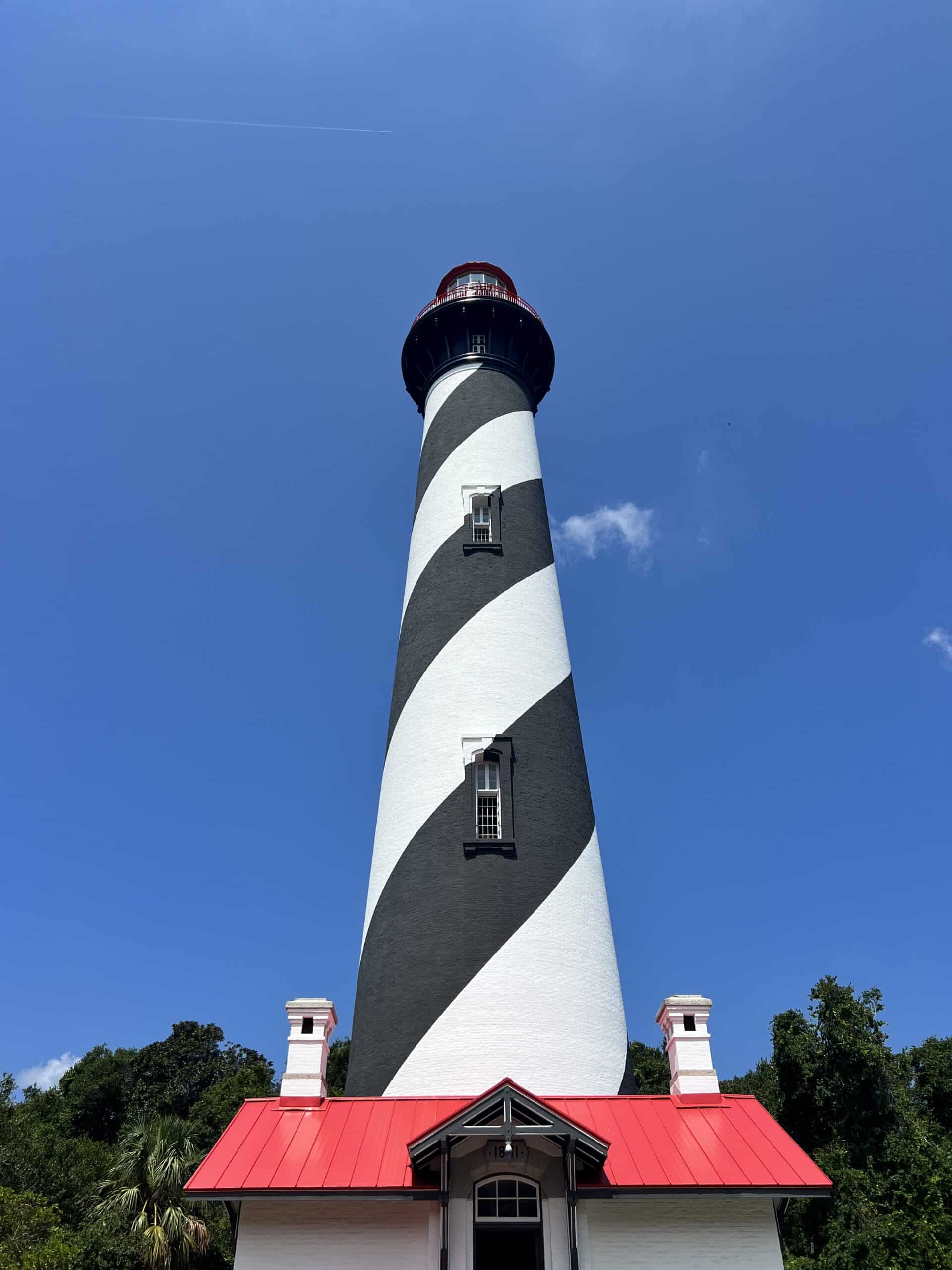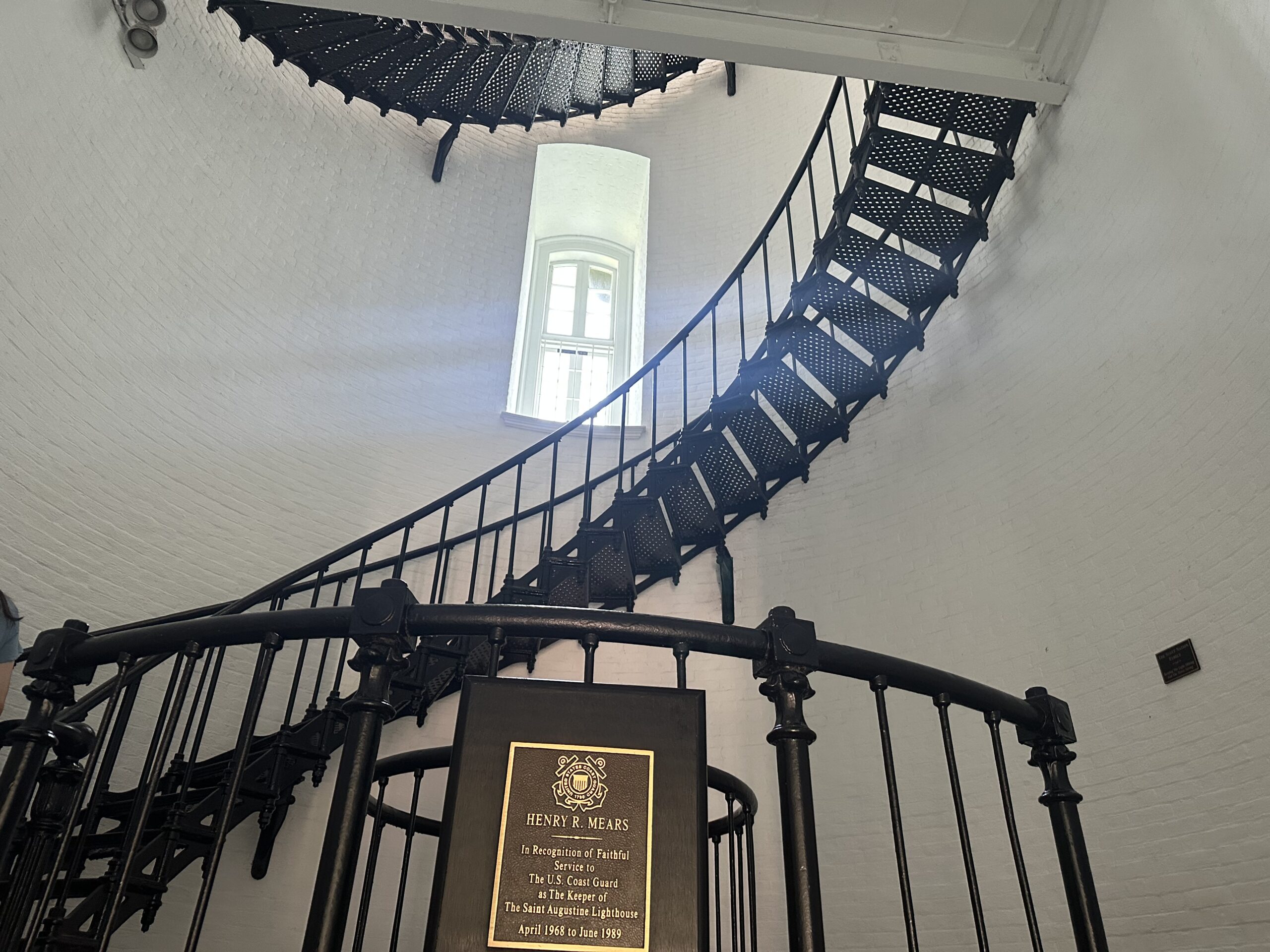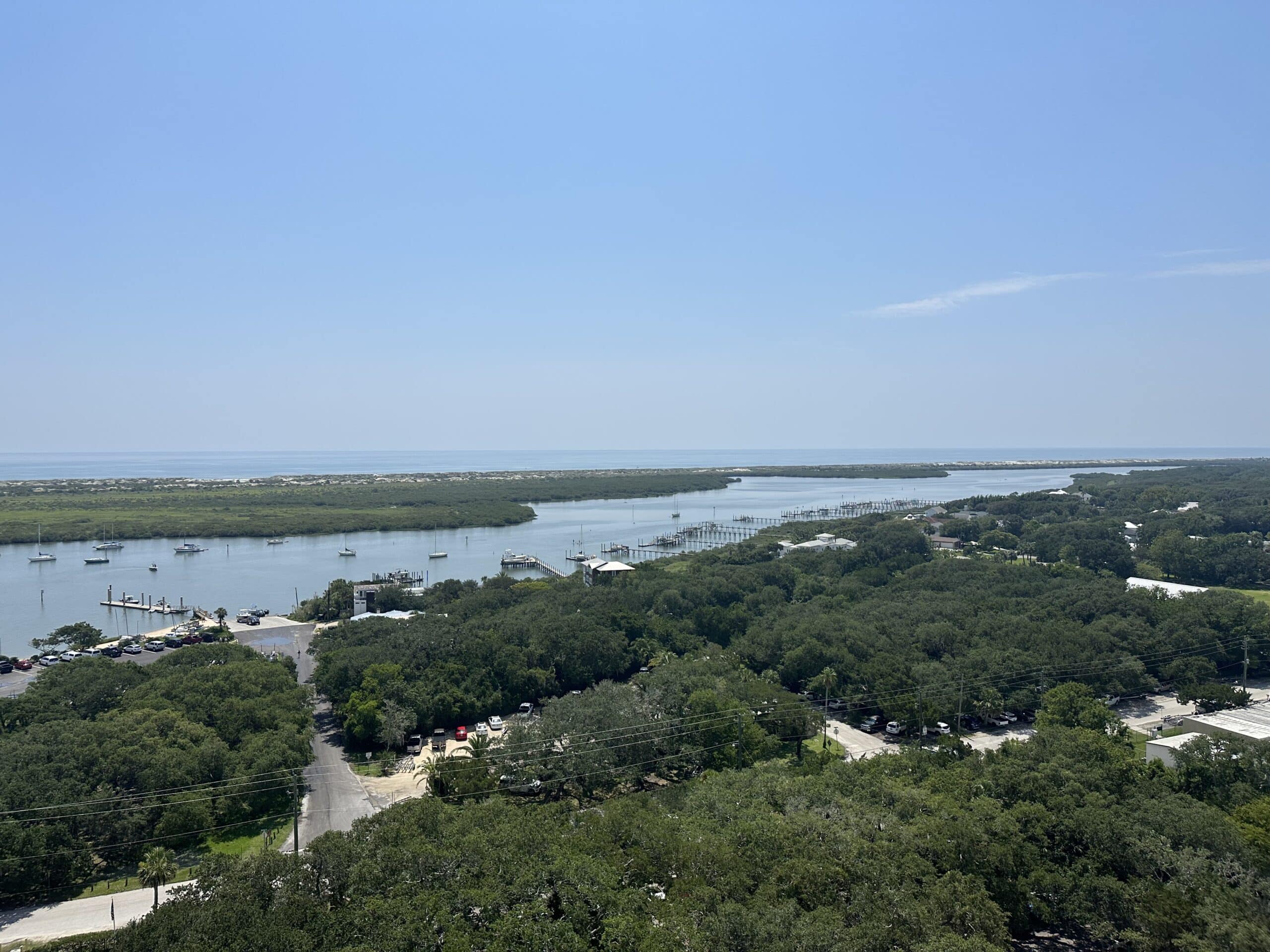Over the previous weekend, my two best friends (Tia and Stephanie) and I took a small trip to St. Augustine. We went for two main reasons; one being to celebrate my upcoming birthday, and the other is to give a sort-of farewell to Stephanie who is moving to New York to attend a D.O. medical school. The three of us have been stuck-like-glue to each other for as long as I can remember, but instead of dwelling on the inevitable breaking-up of the band…we decided to celebrate our years of friendship with a weekend of exploration and entertainment.
I’ve never been to St. Augustine before, so naturally I wanted to do some tourist-y things like go on a ghost tour and see the Castillo de San Marcos. While both were great fun, the highlight of my vacation, actually, was going to the St. Augustine Lighthouse. What an incredible experience! Not only do you have a chance to climb to the top of the lighthouse and view all of St. Augustine, the property is covered with museum buildings that illustrate how the lighthouse keeper and his family lived day-to-day on the property.
On the ground floor of the lighthouse are some really cool artifacts such as the keeper’s uniform and a “giant wrench,” as it was called, that was used by two people to screw in large bolts at the top of the lighthouse. As far as the actual light that shone so brightly, the lens that was covering the light was called a Fresnel lens and stood at nine feet tall. The glass lens was hand-blown in Paris specifically for the St. Augustine Lighthouse back in 1874. And behind the beautiful lens, was a huge oil lamp that had a 10 gallon oil capacity inside. Today, there’s even a 20lb bucket for you to try to lift to demonstrate just how much oil was needed and how heavy it was for the lighthouse keeper to carry that oil up those 219 steps.
A snippet from the February 28, 1889 issue of The Saint Augustine Weekly News read, “The lamp was a brass cylinder of 10 gallons capacity. Inside it has a heavy weight which governs the flow of oil to the burner. The burner has five wicks in concentric circles. A chimney leads to the roof. It has a damper which regulates the flame. The globe is a huge case of glass which revolves around the lamp every nine minutes. It makes a flash every three minutes when a big bulls-eye lines up between the lamp and the human eye. The cage weighs two tons. It revolves around a clock work. The machine is in the glass case directly below the lantern.”
Now, as magical as the lighthouse seems with its rich history and breathtaking architecture, don’t be fooled into thinking it has lucked-out on avoiding the ghostly curse of St. Augustine. The lighthouse also has a much darker and more paranormal history attached to it as well. It is reportedly one of the most haunted buildings in the city. From the many wartime ships that have wrecked off the coast to the more isolated incidents that have occurred on the property; there are many ghost-a-foot, so I hear. Though I can’t possibly scratch the surface of either side of this lighthouse’s history, I highly recommend that you take a trip there and throw yourself firsthand into the entrancing experience that is St. Augustine.
To read more about the St. Augustine Lighthouse, check out some of the links below:
-https://www.staugustinelighthouse.org/
-https://tinyurl.com/3p7r4cfz





